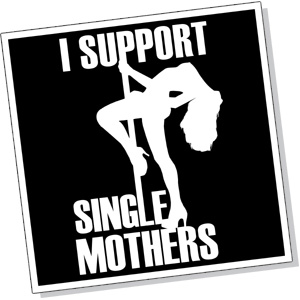The essence of bravery is being without self-deception. However, it’s not so easy to take a straight look at what we do. Seeing ourselves clearly is initially uncomfortable and embarrassing. As we train in clarity and steadfastness, we see things we’d prefer to deny—judgmentalness, pettiness, arrogance. These are not sins but temporary and workable habits of mind. The more we get to know them, the more they lose their power. This is how we come to trust that our basic nature is utterly simple, free of struggle between good and bad.
Pema Chödrön, The Places That Scare You: A Guide to Fearlessness in Difficult Times
Let me preface this book review by saying this: I expected to hate this book.
I’ve been reading T.C. Ryan’s Ashamed No More: A Pastor’s Journey Through Sex Addiction. I expected a few things: a list and description of all of the pastor’s “sins,” a comparison of the author’s sex life to those who are much worse than he is, and a clear and thorough way out of addiction, based on his own “conquering” of his own sin.
Instead, the book is a thoughtful, compassionate, and tasteful (did you hear that? TASTEFUL!) explanation of the author’s struggle with a sex addiction. No lurid details (I actually kind of wish there were more!), no simplistic solutions (“If you’re struggling with this, you’re clearly not praying enough!”), and very few recriminations. Even in the few recriminations, about his relationships with his father and mother, Ryan is quick to accept responsibility for his own habits of mind.
In one chapter, Ryan extols the virtues of AA, or of the AA model for recovery. And I’m glad that he found recovery there. However, AA only works for less than 5% of the individuals that enter an AA meeting. It’s a good tool, but not the only tool, which we see later in the book. Ryan tells us all of his resources: AA, an accountability group, computer software to have online accountability, retreats with monks, centering prayer, anti-depressants, and several types of cognitive therapy. There is no simplicity in the way to recovery, according to Tom Ryan.
My favorite part of Ryan’s book is his critique of the church. Talking about his teen years, Ryan writes that the church “reinforced my guilt and my shame.” He tells of the time he approached a youth leader about not being able to control his need for masturbation. Ryan writes,
When he figured out what I was talking about, he turned beet red. This wasn’t his fault; it’s just that we didn’t talk about these things. He didn’t have anything I could read. He didn’t have anything to say. When I heard his words and saw how his face became red—he’s a really, really good guy, his reaction wasn’t his fault—I thought, Oh, this is something you don’t talk about. You fix this on your own. I knew all about living life on your own, so it made sense.
I do not agree with Ryan’s point of view about pornography:
Pornography takes something very real, very human—something everyone can related to—and distorts it. Our sexuality is meant to be lived and expressed in the context of a healthy, integrated life, and pornography is never an expression of good health or integrated living. Pornography is dis-integrating. While our sexuality is but one aspect of who war are as human beings and needs to be integrated with our other aspects, pornography isolates that one human dimension and distorts it by magnifying it and minimizing it at the same time.
That pornography distorts our humanity is what no one in the sex industry seems to admit, and most of us who have used the products of the sex industry for our own gratification don’t see it or don’t want to admit it either. Saying that porn cheapens our sexuality doesn’t go far enough. Porn magnifies human sexuality, distorts it, makes it larger than reality and isolates it for trade—I’ll show you this and you give me that. At the same time, it makes the magnificence of being a creature made in the image of God something as insignificant as ink on paper or pixels on a screen. It’s a most malicious smearing of the divine image in us. Simply put, porn is uncompromising, progressive, destructive evil.
What about the seemingly harmless nature of innocuous sexual gratification? Whom does it hurt? It hurts the women and men who work in the sex trade. It hurts those who patronize the sex trade. It hurts those who live with or care about them.
Wow. Judge much? I admire that Ryan sees pornography as a problem in his on life, and has faced it head on. But Ryan talks about his own shame, then heaps shame on the participants in the sex industry. Yes, for some, pornography can be destructive. And yes, for some, it can distort human sexuality. But to decide, absolutely, that it is bad in all cases, goes too far.
Thankfully, Ryan’s voice changes from this judgmental, finger-pointing later in the book. The book starts out dispassionate and dry, but around page 87, in a chapter titled, “Excavating Origins,” Ryan moves to tell his own story of pain and healing. It’s raw, loving, and inspiring.
I would highly recommend this book, for pastors dealing with their own “performance” issues (which means, I think, a battle with our own egos to appear perfect to our congregations) and for pastors who will meet congregants who have addictive issues with sex, drugs, alcohol and other substances (that would be all of us, if we’re honest).
Ryan’s book is brave. It is smart. And it is touching. And although I wanted to hate it, I didn’t.











